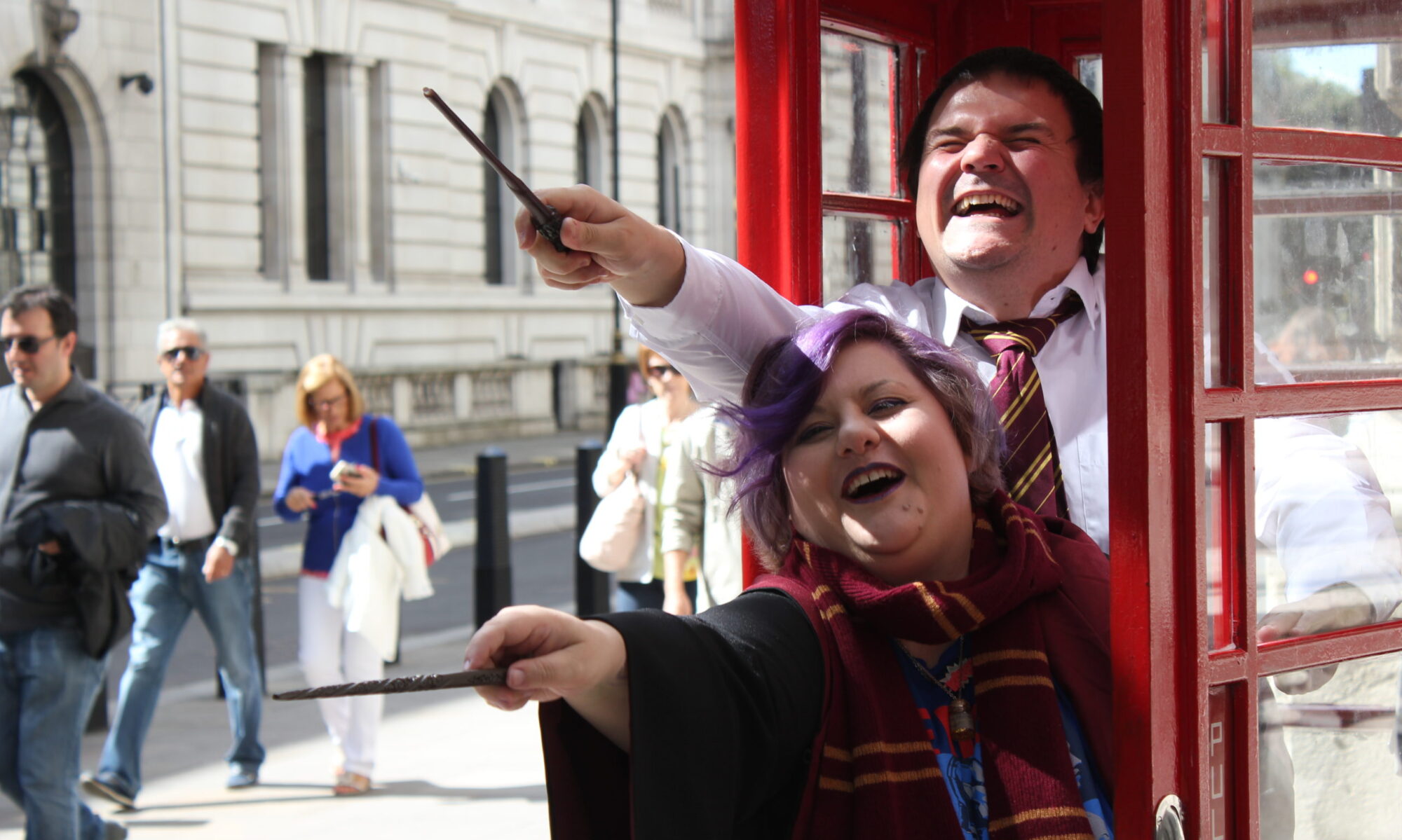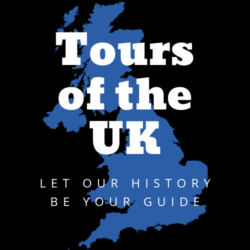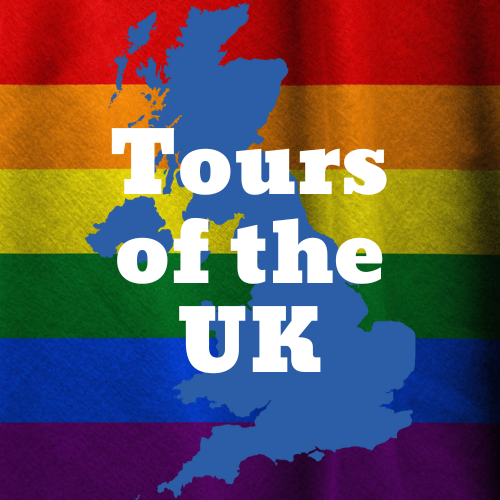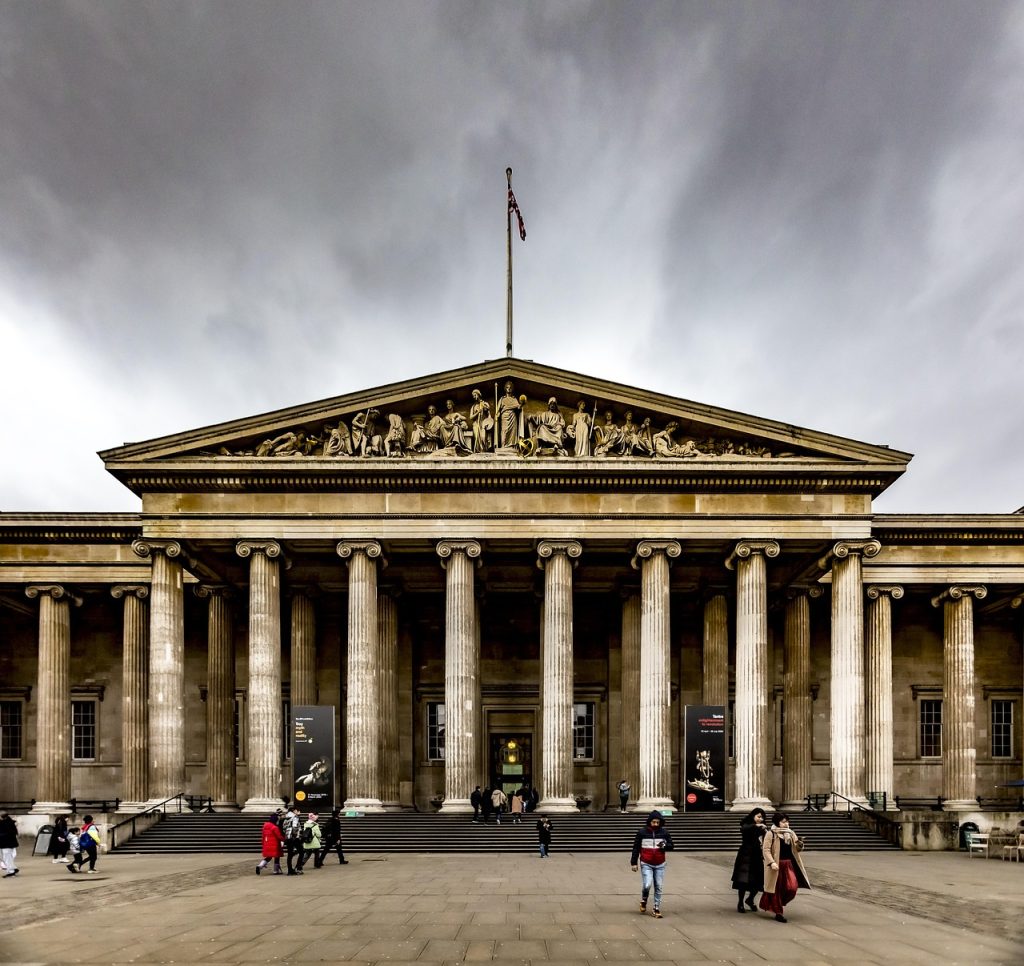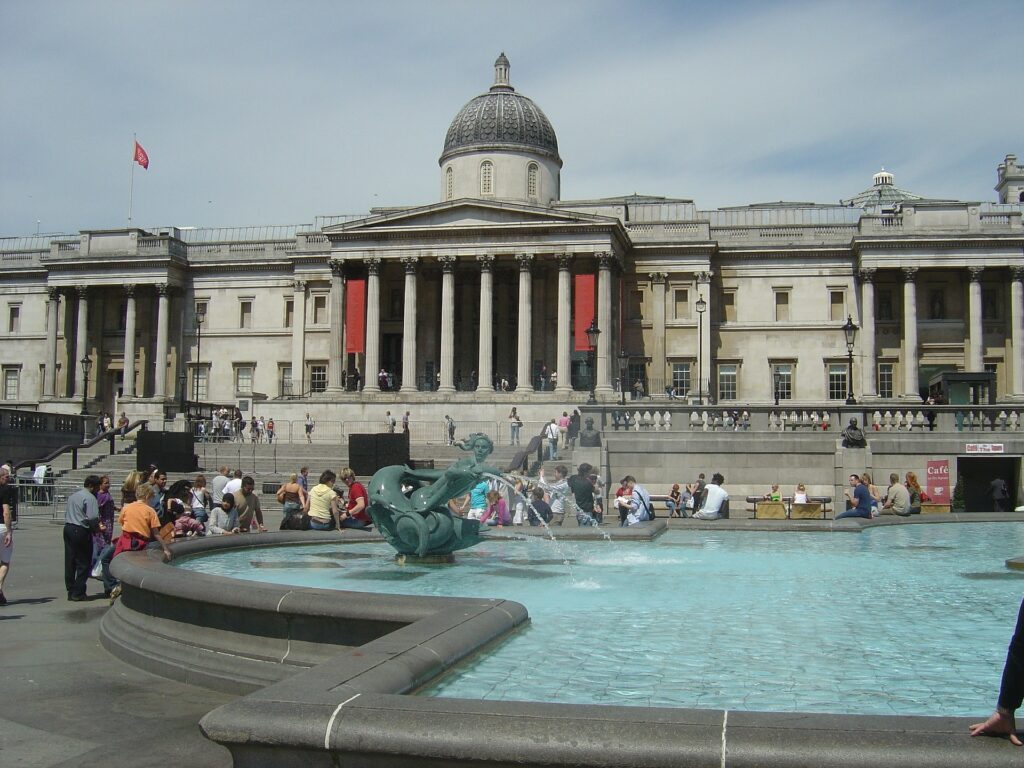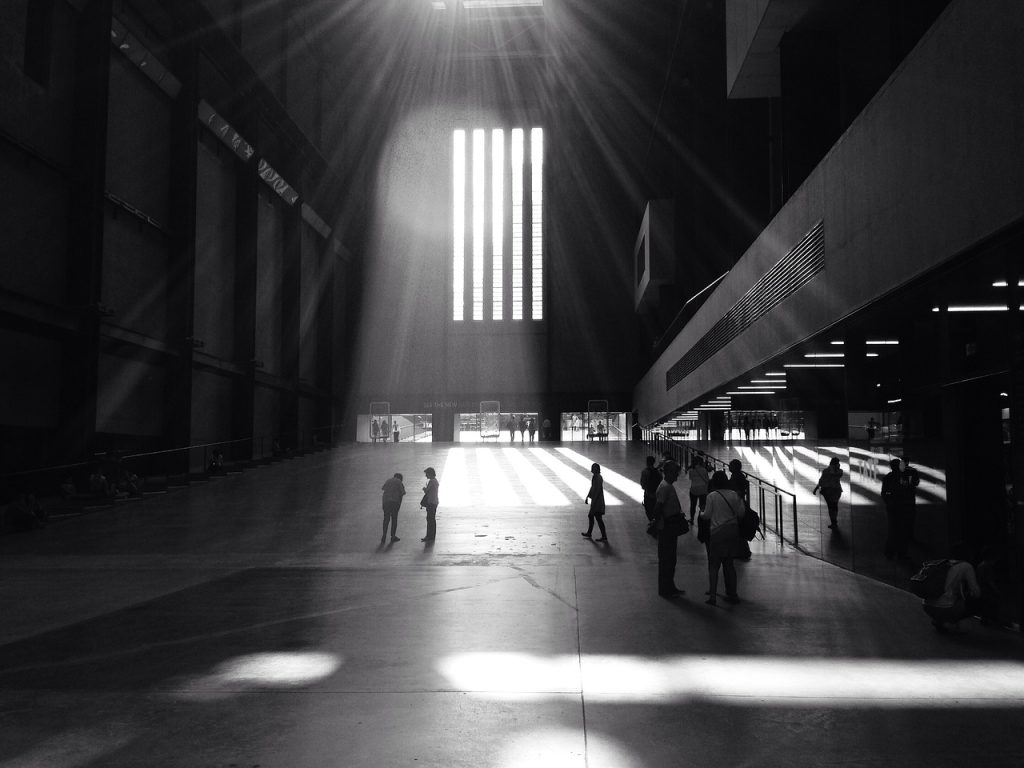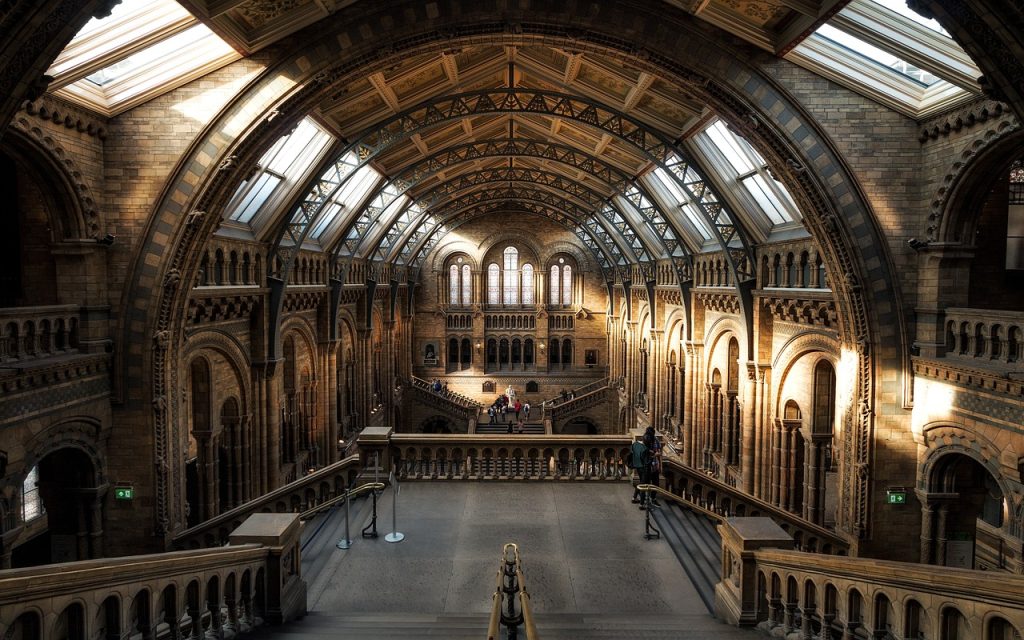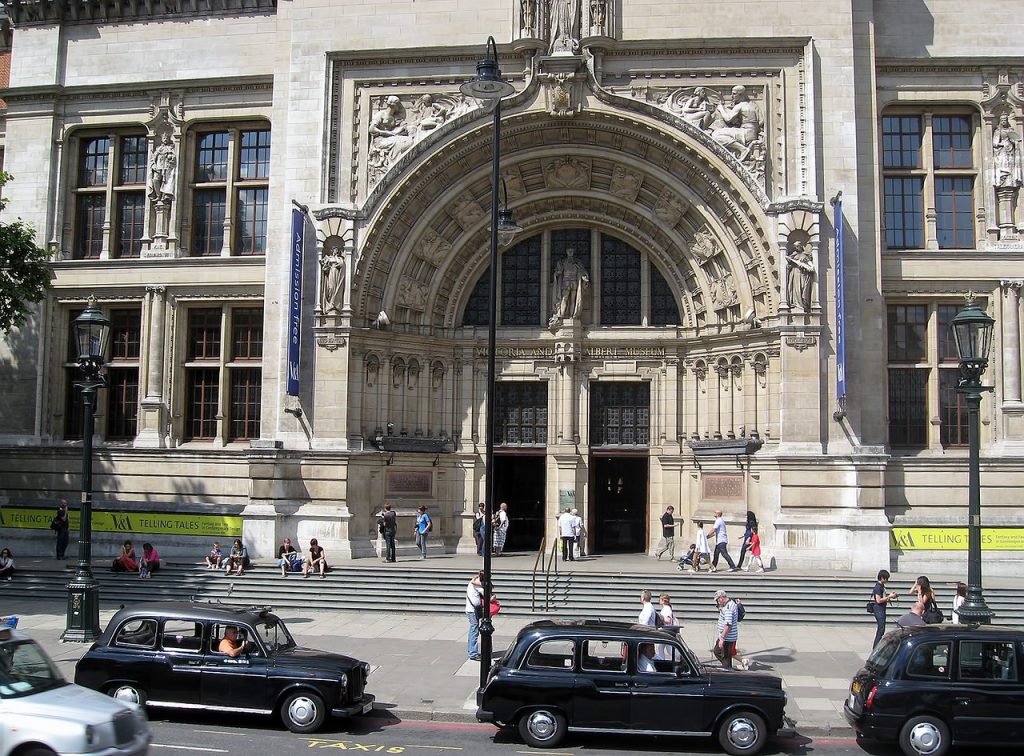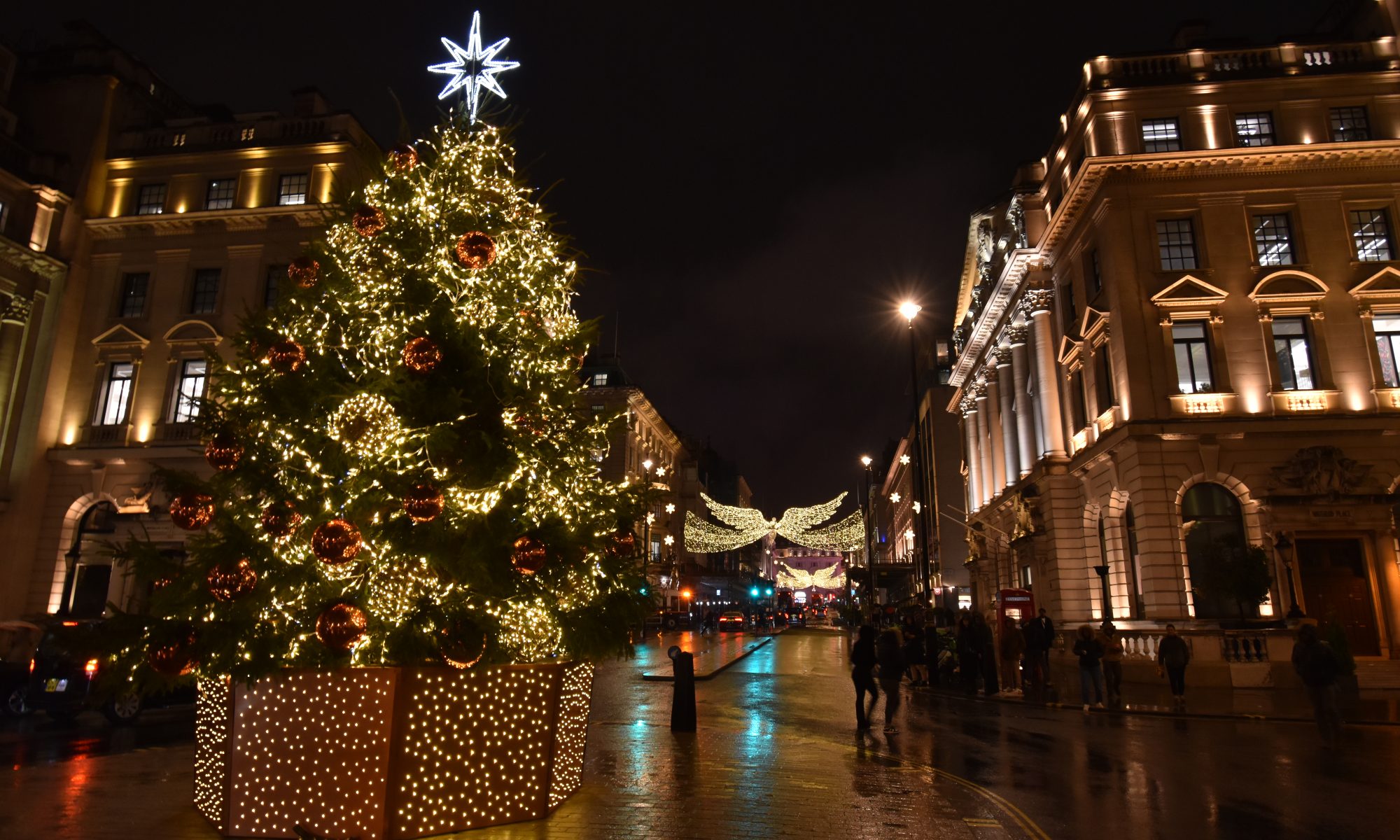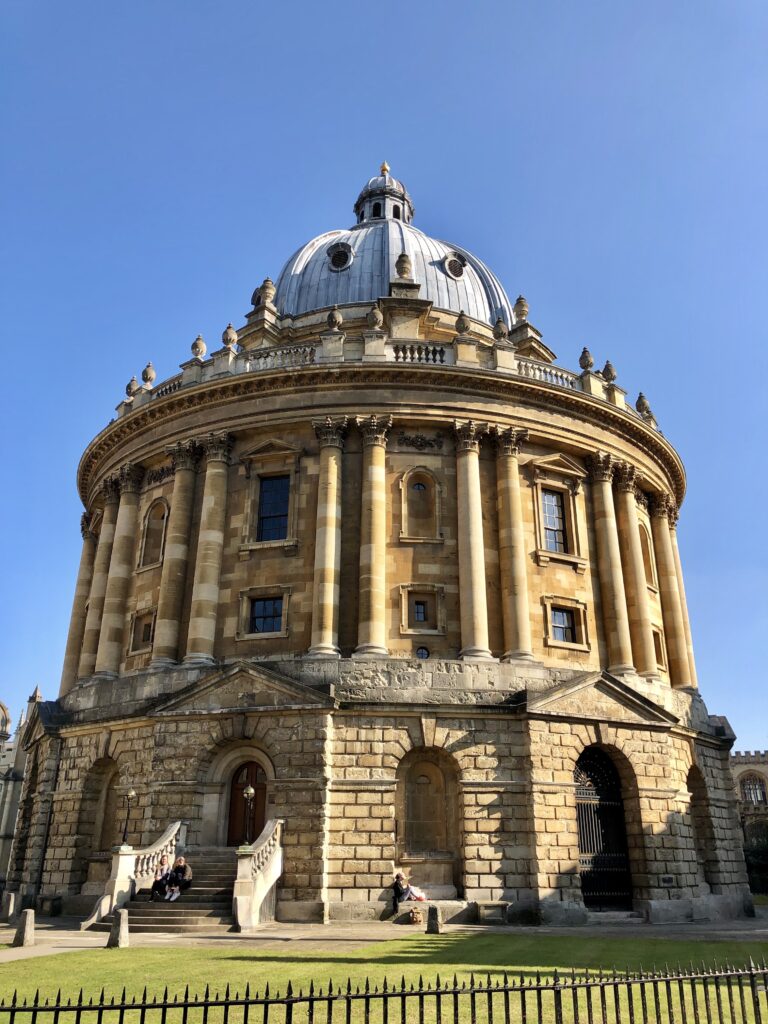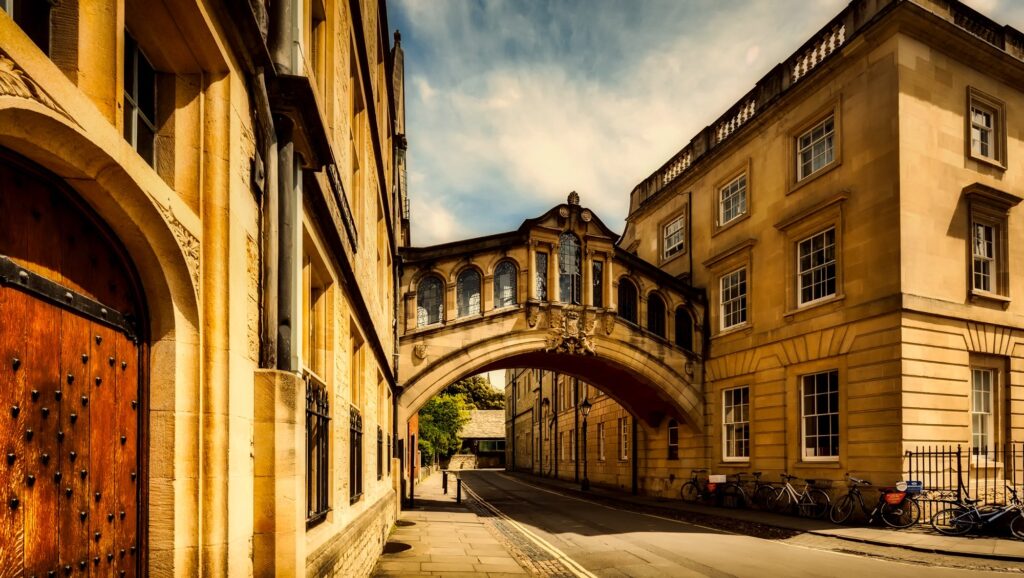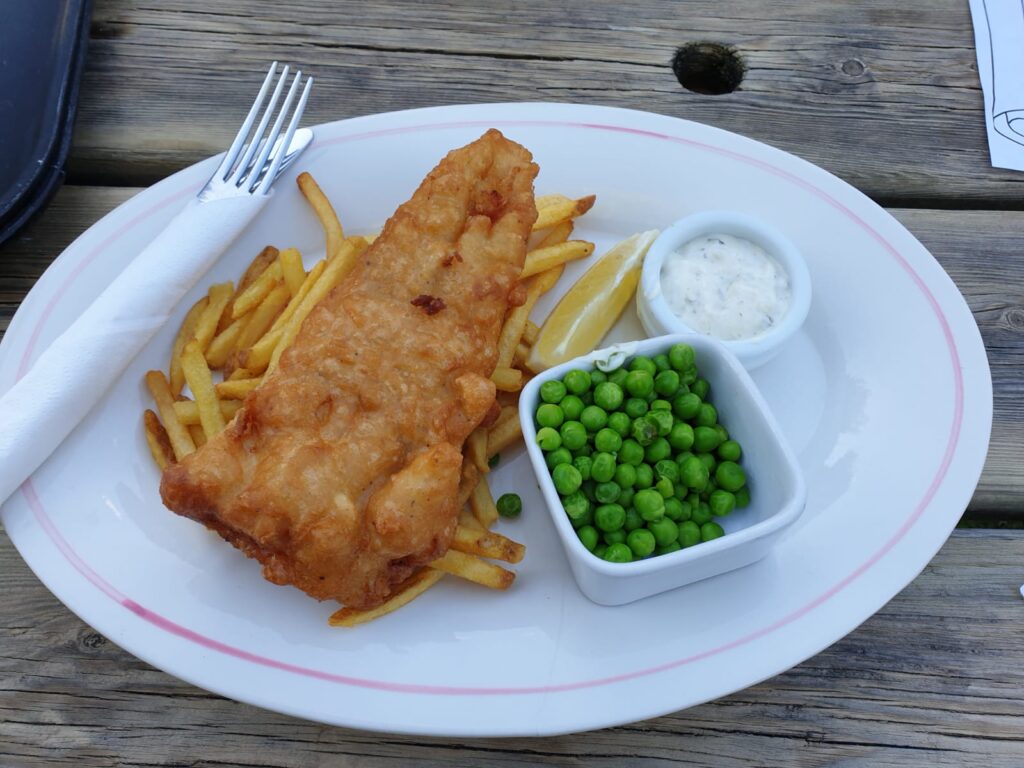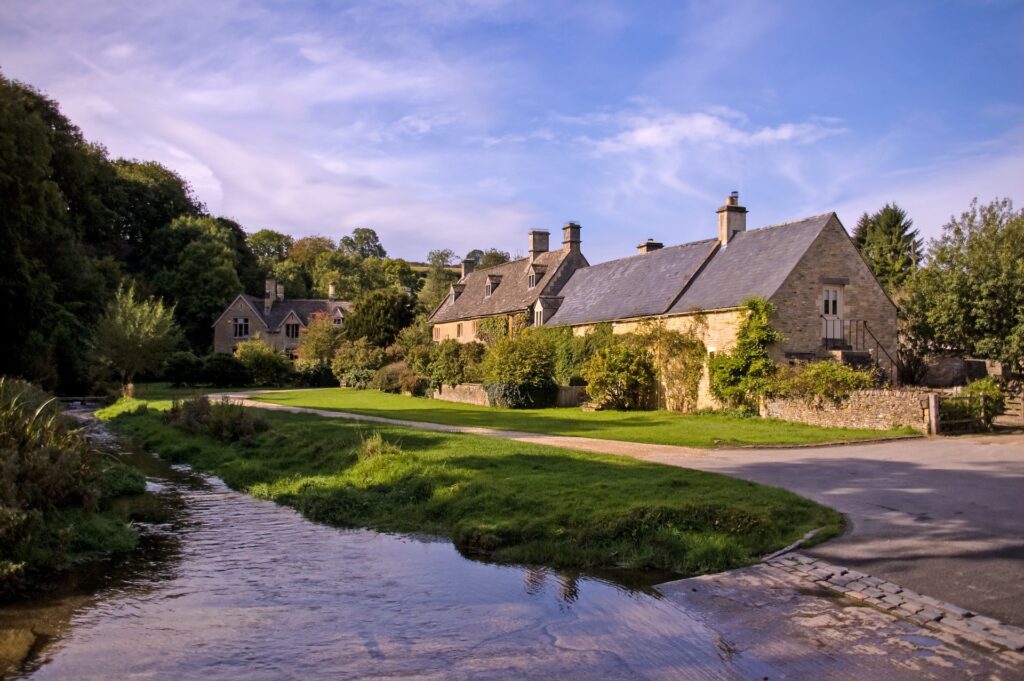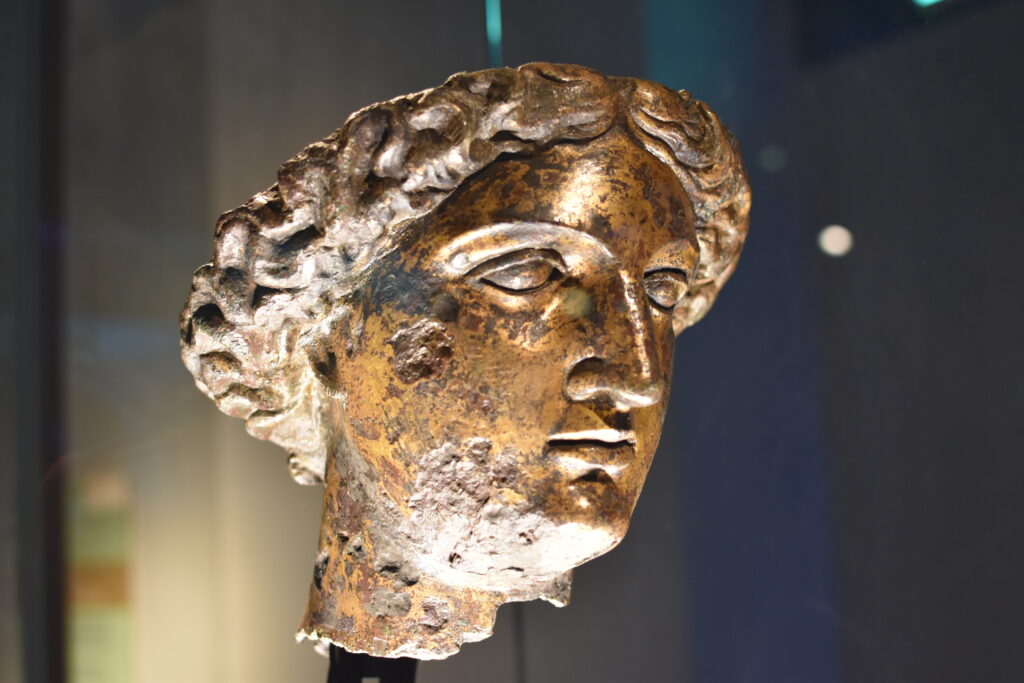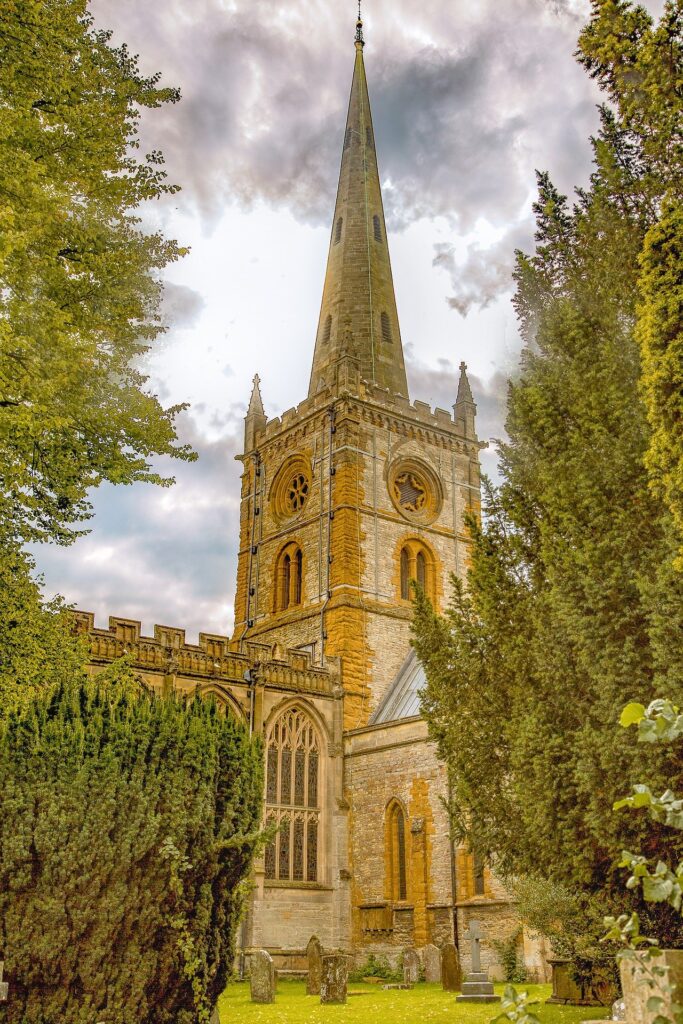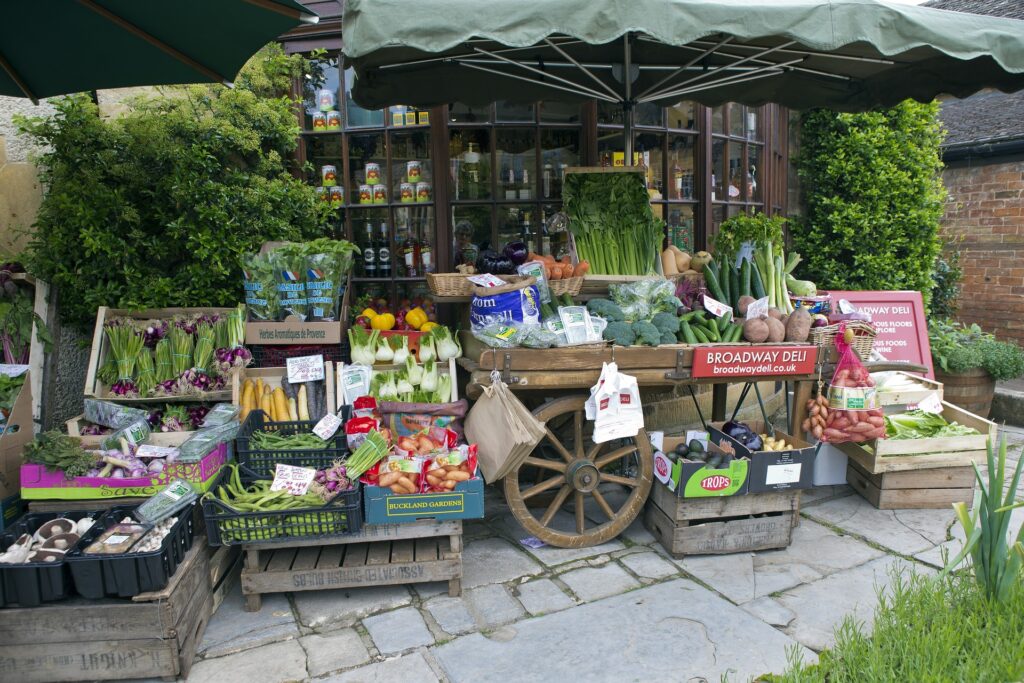The UK has a rich Queer history-we have LGBTQ+ contributors to history in the form of Alan Turing and Queer creatives like Oscar Wilde and Ivor Novello. And many locations across the country are connected to this history- some well-known, some less so.
Houses and Homes
Places where Queer people have lived are hugely important to history. They are a reminder that queer folks have long existed and often give an insight into their lives. People usually love visiting historic houses to learn about history, and its important queer history is part of this.
Plas Newydd (Denbighshire Wales)
Plas Newydd was the home of the ‘Ladies of Llangollen’ who lived in this house in North Wales from 1778. They were two aristocratic Irish women who then lived in Wales as a couple for 50 years. Their home is now a popular venue for queer women to get married in.
Shibden Hall (Yorkshire, England)
Often called ‘the first modern lesbian,’ Anne Lister was an entrepreneur, landowner, and diarist. Immortalised by the BBC series ‘Gentleman Jack’, which followed a fictionalised version of her adventures and her marriage to Ann Walker. In her diary- discovered many years after her death- we learn about her relationships with women, including Ann Walker, whom she unofficially married. Both Anne and Ann lived at Shibden Hall untill they died. It is now a popular local musuem.
Millthorpe House
Edward Carpenter was the founding father of gay rights in Britain, living openly with his partner George Merrill at a time when hundreds of men were prosecuted for homosexuality. Millthorpe House was a place of pilgrimage for many, including the writers E M Forster and Siegfried Sassoon and other less well-known women and men questioning their sexuality, including soldiers during the First World War. The house in the Peak District was also a testament to Carpenters’ design choices. Now a private residence sadly this histoic icon of Queer history is currently closed to visitors.
Nottingham Castle (Nottingham)
Poet Sir John Clanvowe and Sir William Neville, Constable of Nottingham Castle, were buried together in Istanbul. The men were joined in adelphopoiesis, a Christian ceremony that united two people of the same sex. It was often called ‘wedded brotherhood’ in Chaucer’s ‘The Knight’s Tale.’ Neville and Clanvowe’s coats of arms were combined, as with married couples, so it is commonly accepted that they were a couple.
Pride and Protest!
LGBTQ+ people have had reason to protest for their rights and show pride in their community. Many locations have been really important for this over the years.
Highbury Fields (London)
The first-ever gay rights protest occurred in Highbury Fields in November 1970 following the arrest of Louis Eakes, who was caught in a police entrapment operation. Over 100 members of the Gay Liberation Front held a torchlight rally. It is widely believed that this protest led to the many Pride marches running throughout the UK.
Trafalgar Square (London)
London’s first official Gay Pride Rally was held in 1972, organised by the Gay Liberation Front (GLF). The GLF was formed in 1970 in response to the New York Stonewall riots, and one of the key influences was Ted Brown, a civil rights and LGBTQ+ campaigner. The pride rally started with a march through London, followed by a mass ‘kiss-in’ at Trafalgar Square.
Greenham Common (Newbury)
In a world before dating apps, lesbians often met through activities associated with women’s rights and the peace movement. One meeting place was the women’s peace camp at Greenham Common in the 1970-80s. Established to protest against nuclear cruise missiles, the peace camp also hosted a strong lesbian community, giving the community new visibility in the media that attracted others, especially young women just coming out.
Connections to Queer History
Many spaces connect to queer history – both good and bad, and those places are significant to the community.
The Novello Theatre (London)
The theatre over which Ivor Novello lived for most of his life and for which the theatre was later named. Both the plays and musicals that have been staged there- including the ABBA musical ‘Mama Mia’ and the composer’s history- make it an important place for LGBTQ+ people.
Bletchley Park (Bletchley)
Mathematician Alan Turing is most famous for his work at Bletchley Park during the Second World War, where his work was key to decoding German messages that helped win the war. In 1952, Turing was prosecuted for ‘gross indecency’ in a homosexual relationship, and he later took his own life. He was pardoned for his crime long after he died in 2014, and a law known as ‘Turing’s Law’ pardoned 75,000 others. Bletchley places Turing’s contribution at the front and centre of their exhibitions and does not shy away from the rest of his story. They also have a number of his personal items on display, as well as a £50 banknote with his image on it (the first LGBTQ+ person to be featured on a banknote) with the serial number 1941 (the year his war codebreaking was successful). Turing is embraced as a person by Bletchley, and his LGBTQ+ identity and the tragic impact on his life are included in this.
Want to visit Bletchley Park? Why not book our Bletchley Park Tour? To book click here.
Woolwich Armory (London)
Lilian Barker was appointed Superintendent of Women Workers at the Woolwich Arsenal in 1916. Here, she oversaw the work and welfare of 30,000 women munitions workers. Before this appointment, Lilian had grown up in Kentish Town and become a teacher; she also ran an innovative youth club in Paddington. Barker lived with her partner Florence Francis for 40 years until the end of their lives.
Now open as a museum in Greenwich, the Armory is a great place to spend a day out.
Craiglockheart Hospital (Edinburgh)
Wilfred Owen knocked at the door of famous war poet Siegfried Sasson to ask him to look at his poems, and they began a relationship that transformed Owen’s creative work.
The Old Bailey (London)
It is the site of Oscar Wilde’s trial, but also where he gave his famous ‘Love that dare not speak its name.’ speech. While Wilde’s trial is a sad moment in LGBTQ+ history, it also is a moment he spoke up for the community at a time of great distress.
Pubs and Clubs
Pubs and clubs have long been essential meeting places for Queer people. Because they were not- and often are not- able to be fully themselves in other spaces, pubs and clubs became spaces to do that. Britain has many gay pubs that have taken on enormous importance in history.
The Royal Vauxhall Tavern/RVT (London)
Internationally known for its ground-breaking alternative cabaret performances, the Royal Vauxhall Tavern has been a hub for the LGBTQ+ community since the 1950s. It was raided many times by the police, often with Drag Queens fighting them off. This included one now infamous story, including Lily Savage, the drag alter ego of Paul O’Grady, who was known for hosting TV shows like Blankety Blank. Lily was a staple at the Royal Vauxhall Tavern, and in 1987, when the police raided the pub wearing rubber gloves (out of fear of AIDS), Lily asked, ‘Oh good are you here to do the washing up?’ the iconic line has gone down in history and is one of the lasting memories of Lily especially following Paul’s death in 2023. The RVT is a listed building due to its importance in Queer history as the oldest surviving LGBTQ+ venue in the UK. Currently, its future hangs somewhat in the balance with its current owners moving on but the hope is that its listed status will help preserve its future as an LGBTQ+ venue and with it, the rich history of the building.
The Admiral Duncan (London)
Though the pub has a long history, it only began to be known as a ‘Gay Pub’ in the 1980s. Before that, it was known as a hangout for sailors and gang members, and on one notable night, Dylan Thomas left his copy of Under Milk Wood there after a drinking binge. However, by the 1980s, its gay identity was firmly established, and it was a popular pub among the many Queer venues in Soho.
On April 30th 1999, The Admiral Duncan was the victim of a nail bomb attack. Three people were killed and seventy-nine injured when the bomb went off in the early evening. It was part of a spate of nail bombs across London, and David Copeland was arrested and charged with the Admiral Duncan bombing and two others in Brick Lane and Brixton. While 140 people were injured throughout three weekends, the only fatalities were at the Admiral Duncan.
Despite the tragedy, some positives did come of the attack. The police team sent to interview witnesses was staffed entirely with LGBTQ+ members of the Metropolitan Police, marking a significant turning point in the previously homophobic attitude of the force and beginning a better relationship with the police in the city. The day after, a spontaneous gathering in Soho was attended by thousands and included a speech from the Police Commissioner.
There is a memorial chandelier in the pub along with a plaque to memorialise those who died and were injured.
The Garrick's Head (Bath)
The first known gay pub in Bath, with a reputation dating back to at least the 1930s. The pub had two bars next to the Bath Theatre Royal, with the side for gay clientele known as The Green Room. Its status as a gay bar was well known, even seen in a 1976 Bath Pubs guide.
Euston Lodge (London)
In the late 1990s, The Glass Bar at Euston Station became popular with the lesbian community. Close to several railway stations, the bar was frequented by locals and out-of-towners alike and hosted women’s groups such as Kiss, a social network for Asian women. To get in, patrons had to knock loud enough to be heard over the noise inside.
The Gateways Chelsea (London)
Opened in the 1930s by a retired colonel, the Gateways Club was the longest-running lesbian nightclub of the 20th century. Gateways became an almost exclusively lesbian club under the management of Gina Ware, and an American ex-airforce woman, Smithy, was herself a lesbian.
Preserving History
Gay's The Word (London)
As the oldest dedicated LGBTQ+ bookshops in the country, Gay’s The Word is a treasure. The shop has everything from young adult fiction to crime and romance and enough non-fiction books to last you through to next year’s Pride month. Many will have learned about Gay’s The Word from the hit film Pride, which told the story of LGSM (Lesbians and Gays Support the Miners). The bookshop served as headquarters for the campaign group, which raised money and support for striking Welsh miners in the Eighties.
The Bishopsgate Institute (London)
Proudly independent since 1895, this Victorian building near Liverpool Street is a cultural venue in the City of London. The Bishopsgate Institute houses the largest LGBTQ+ archive in the world. They also have hosted same-sex dance championships and are home to same-sex dance groups and various LGBTQ+ groups.
